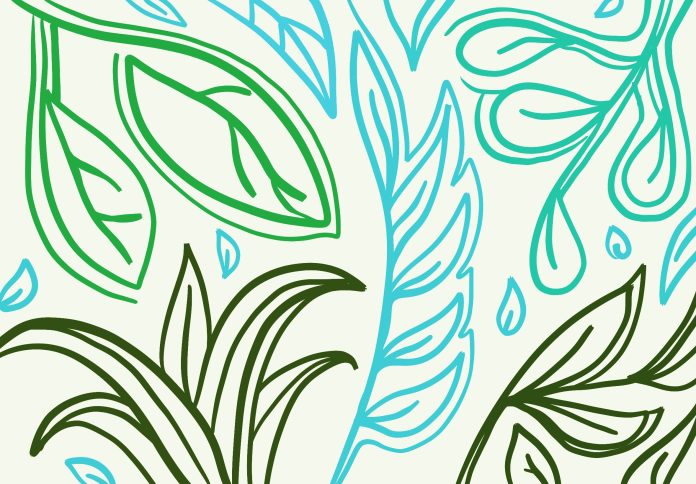Melanie Martinez
Co-Science and Tech Editor
The Santa Barbara coastline is populated with many unique native plant species, each one having special traits that allow them to thrive. One such tree is the coast live oak. True to its name, the coast live oak flourishes in environments closer to the ocean, making our own UC Santa Barbara (UCSB) and Isla Vista (I.V.) community the ideal environment for it. The coastal tree is not only present on our campus but also throughout Santa Barbara, whether it be on local school campuses or along streets.
Averaging around 70 feet in height, the coast live oak grows around 24 inches per year with a moderate growth rate. The canopy of the Coastal Live Oak is also impressive, as it can expand from 20-70 feet — providing ample shade below. It is very common for the canopy of the tree to become wider than the actual height of the tree itself.
The gray trunk stabilizes the tree and grows twisting branches that produce dark green oval leaves that decorate its branches.
During the fall and winter, the tree begins to fruit reddish brown acorns, which often sprout new coast live oaks or are eaten by small local animals. Not only is the coast live oak a wild food source but is also home to many animals and insects. Squirrels scurry up the trunk while California sister butterflies flit around the leaves and branches. Like most trees, the coast live oak is a critical part of other species’ environments, making climate change’s threat to the species a growing concern.
As a result of warmer average temperatures combined with less-than-average rainfall, California’s coasts are suffering from droughts. During these times, coastal fogs are the only sense of relief that the tree is able to receive. However, the environment that the coast live oak once thrived in may no longer be able to support them in the coming years. Consequently, the lives of the animals and insects that depend on the trees for protection or shelter will be affected.
In response to climate change’s threat and the lack of the coast live oak nearby campus, there have been restoration efforts to restore the native plant’s numbers at and around UCSB. This restoration area is located in the Northwest corner of Coal Oil Point Reserve, which is west of UCSB and the I.V. a community. In 2014, 150 coast live oaks were planted at the reserve. Along with the coast live oak, this group has made other restoration efforts for more native flora and fauna.
The coast live oak is a staple of our Pacific coastlines and the Santa Barbara community. The species’ preference for the coast makes it a native to the area and something that must be protected as the threat of climate change continues to evolve. The tree proves to be a crucial part of our coastal ecosystem and contributes to the greenery of our local communities.











